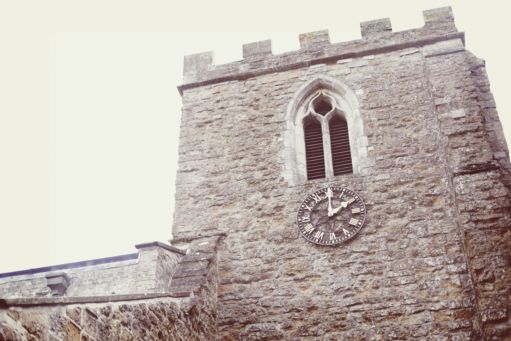St Peter's Church

The Parish church of St Peter, Great Limber, is a Grade 1 Listed Building. (First listed on 1st November 1966.)
It was built in the 12th century with 13th, 14th, 16th and 19th century additions and alterations. The Church is built from coursed Tealby ironstone with limestone rubble, limestone ashlar dressings and some yellow brick repair and patching. The roof is slate.
Entry to the Church is from the attractive graveyard that has within it two commonwealth war graves.
The North Door is blocked up (probably during the 19th century renovations) The south porch has a reconstructed 12th century arched opening. There are side benches and single lights to both sides. The south doorway is late C13, moulded and pointed.
Outside there is a Lych Gate built in 1912 in memory of Maunsell Richardson, racehorse trainer to Earl of Yarborough. It has low stone walls and a stone tiled roof supported on wooden pillars.
The Tower: To the west there is a plain square tower with a C14 plinth and battlemented parapet. All faces have early C15 2 light belfry openings in ashlar with ogee tracery. In the east side of the tower an earlier nave pitch in white limestone rubble can be seen.
There are two floors in the tower one level with the clock and one above where the bells are hung. The clock mechanism was bought in 1958 with funds raised in the village (a ‘Limber Highlights’ Concert Party and a Little Brocklesby Garden Fete) Plans are afoot to electrify the mechanism so that a weekly climb up the tower to wind the clock will no longer be required!
The three bells are of particular interest and date from 1595 - seven year after the Armada and two year after the plague which claimed the lives of 122 villagers. Each bell carries a motto cast in relief on the exterior "God save his Church ; Jesus be our speed; God Save the Queen (Elizabeth 1st). The largest bell is over three feet in diameter and was recast in 1924.
The Font: This dates from the 12th, 13th or 14th century. (Different accounts have different dates!) It is an octagonal bowl resting on an octagonal base with dogtooth decoration on an inverted round column with 8 attached shafts with fine late C12 stiff leaf capitals. Lined with lead there is also an oak cover.
The Nave: At the west end of the nave is a group of early leaf marble wall tablets. At the west end of the south aisle is a black marble tablet, to the Rev. T. Walkden, there is a monument to William Richardson. The nave, aisles and chancel were roofed in lead until the mid-19th century when roof timbers were replaced and a slate roof added. In the north aisle there is an aumbry (a small recess or cupboard) and in the south isle a piscina (a stone basin near the altar in Catholic and pre-Reformation churches for draining water used in the Mass) In the north aisle there is a window by Kempe 1890. The west window is a C15 3 light with cusped heads and panel tracery under a semi-circular head and hood mould. There are some remnants of medieval glass in the nave windows south aisle.
The chancel arch is crossed by a rood loft of recent construction on the remains of an ancient loft. This serves as a memorial to the men of the village who lost their lives in the two world wars. Their names are carved on the lower panels. On the south side you can see a door and rood loft staircase with well-worn stairs! In 1854-64 some interior restoration by William Butterfield, a tiled floor added, altar rail and the box pews were replaced with open pews at a cost of £600 a new stone pulpit was also added then. Further work took place in 1873.
The Chancel: This part of the church was partly rebuilt in the 19th century and has a two light north window. The vestry is also a 19th century addition. The stained glass east windows are lancets the glass added in 1855 by Wailes to a design by Butterfield and in memory of George Nelson.
The Organ was made by Abbotts of Leeds in 1884, at a cost of £300. It was completely rebuilt in 1987 in memory of Mrs. J Robinson of this parish.
For details of the vicarage click here.
For details of church services and events click here.
With thanks to Don Anderson, long time resident of this village, whose original information leaflet formed the basis for this article.
References also drawn from:
Nikolaus Pevsner, John Harris, Nicholas Antram, Lincolnshire
Historic England Listed Building Register of Lincoln 1845-1848
White’s directory 1842
Kelly’s Lincolnshire Directory 1896
HK Bonny’s Church Notes on the churches of the Archdeaconry
Lee Holmes Quinquennial
